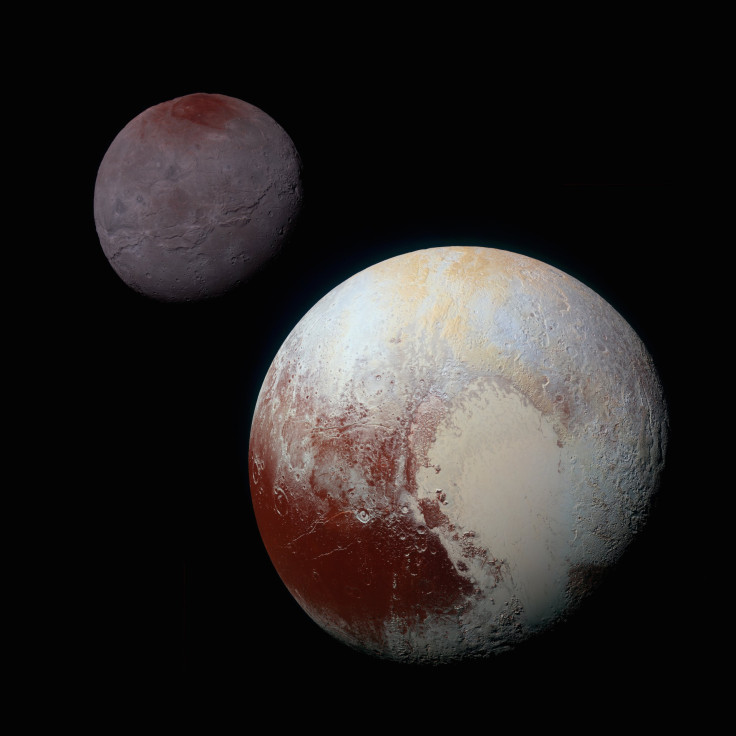Scientists Identify Violent Origin Of Pluto's Smaller Moons

KEY POINTS
- Scientists studied the possible origin of Pluto's four small moons
- Pluto's moon Charon might have collided with a massive object
- Debris from the collision led to the formation of Pluto's small moons
A new study revealed that Pluto’s four smaller moons might have been formed following a violent impact on Charon, the dwarf planet’s largest satellite. This suggests that the four tiny moons might not have come from the planet.
Charon is the largest of the five moons of Pluto, with a radius measuring about 606 kilometers. Recently, a team of scientists examined the history of the natural satellite and its violent past. Their findings were presented in a new study that was submitted for publishing through ArXiv.
According to the scientists, Charon might have suffered an impact caused by a trans-Neptunian Object (TNO). TNOs are minor or dwarf planets in the Solar System that orbit the Sun at a greater distance than Neptune.
The scientists noted that during the early years of the Solar System, TNOs were very common. This means that collisions caused by these massive cosmic objects also happened regularly.
Through observations on Charon, the scientists concluded that the natural satellite previously collided with a TNO, leaving a massive impact radius on the moon that measured about 30 to 100 kilometers.
“From analytical estimates and simulations of disk evolution, we estimate an impactor radius of 30-100 km; smaller (larger) radii apply to an oblique (direct) impact. Although collisions between large TNOs and Charon are unlikely today, they were relatively common within the first 0.1-1 Gyr of the Solar System,” the scientists wrote in their study.
The debris that came from the impact drifted into space around the orbits of Pluto and Charon. Eventually, due to gravitational forces, these pieces of debris coalesced and transformed into larger cosmic objects.
The scientists believe that the debris that came from the violent impact on Charon led to the formation of Pluto’s four smaller moons, which are known as Styx, Nix, Kerberos and Hydra.
“We consider a scenario where the small satellites of Pluto and Charon grew within a disk of debris from an impact between Charon and a trans-Neptunian Object,” the scientists explained. “After Charon's orbital motion boosts the debris into a disk-like structure, rapid orbital damping of meter-size or smaller objects is essential to prevent the subsequent re-accretion or dynamical ejection by the binary.”
© Copyright IBTimes 2025. All rights reserved.





















